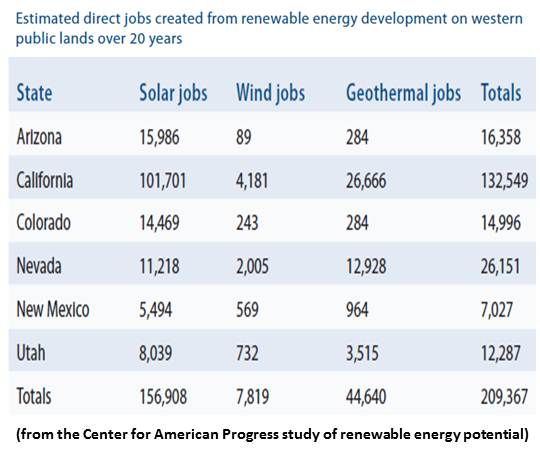Opening his fifth annual National Clean Energy Summit in Las Vegas, Senator Harry Reid (D-NV) brought a few friends to announce that U.S. wind’s installed capacity had reached 50,000 megawatts.
“It represents the generating power of 44 coal plants or eleven nuclear plants,” said American Wind Energy Association CEO Denise Bode. “Fifty megawatts of wind can power almost 13 million American homes, conserve an estimated 30 billion gallons of water compared to thermal generation, and avoid as much carbon dioxide as taking 14 million cars off the road.”
Reid gave a passionate opening address affirming his commitment to fighting global climate change by building renewables. He condemned climate change deniers and subsidies for big oil, and called for closing down coal in Nevada.
“The more clean energy we build,” Reid told the audience, “the cheaper it gets. The more coal we burn, the worse the climate gets.”

In conjunction with the summit, Reid announced Nevada’s first wind installation on public land, Pattern Energy’s 151.8 megawatt Spring Valley Wind Project.
Spring Valley was one of the 2012 installations that took the U.S. wind industry past the 50 gigawatt milepost, Bode said, along with others such as Enel Green Power North America’s 148.8-megawatt Rocky Ridge project in Oklahoma, Utah Associated Municipal Power’s 57.6-megawatt Horse Butte project in Idaho and First Wind’s Kaheawa Wind II project in Hawaii.
The project’s turbines, added Pattern Energy CEO Mike Garland, were 65 percent domestically manufactured.
Department of the Interior (DOI) Secretary Ken Salazar talked at length about the Obama administration’s many efforts to expand renewable energy on public lands. “The conservation industry and the solar industry have lauded what we have done,” Secretary Salazar said about the Programmatic Environmental Impact Study (PEIS) just released by DOI to help streamline the permitting of solar on public lands in six Western states.
Salazar said his DOI had permitted 31 renewables projects on public lands since taking over in 2009 and described efforts to build new transmission and boost offshore wind.

Bode noted that wind built 5,000 megawatts in its first twenty-three years but leapt in capacity to ten gigawatts when its production tax credit (PTC), which expires at the end of 2012, was kept in place from 2003 to 2006. Wind then grew to 25 gigawatts by 2008 and doubled in the last four years.
But with the failure of Congress to extend the PTC into 2013, Bode said, layoffs have begun and wind supply chain facilities are shifting to serve other industries.
Because of the twelve-month to eighteen-month lead time for the building of a wind project, industry watchers and analysts expect the coming year to see a plunge in installations even if, as Senator Reid promised at the summit, the Senate finally extends the PTC before the end of this year.
Center for American Progress (CAP) Chair and Counselor John Podesta said the six Western states covered in the DOI PEIS -- Arizona, California, Colorado, Nevada, New Mexico, and Utah -- could, with proper policy support, generate 34.4 gigawatts of renewable energy from solar, wind and geothermal energy, bring in $137.1 billion in direct investment, and create over 209,000 jobs in the next two decades. That data was based the report The Vast Potential for Renewable Energy in the American West, authored by the summit co-sponsor.
The message from the leaders on the summit’s panels: The technology is as exciting as ever, but crucial policy initiatives are being impeded by politics.



